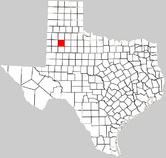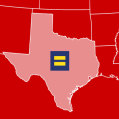
Living in Lubbock & the South Plains
| What is there to do in Lubbock? | Family Friendly | 18 & Over | |
| Lubbock PRIDE | Yes | Yes | |
| PFLAG Lubbock | Yes |
Yes |
|
| First Friday Art Trail | Yes | Yes | |
| St. Johns United Methodist Church | Yes | Yes | |
| Metropolitan Community Church | Yes | Yes | |
| Texas Tech Gender and Sexuality Association | Yes | Yes | |
| Rainbow Leaders Association - Texas Tech University | Yes | Yes | |
| SPeCtra - South Plains College | Yes | Yes | |
| Visit Lubbock | Yes | Yes |
The most popular questions we are asked:
- What is it like living in Lubbock & on the South Plains?
Lubbock's nickname, "Hub City", derives from it being the economic, education, and healthcare hub of the multicounty region, north of the Permian Basin and south of the Texas Panhandle, commonly called the South Plains.
The area is the largest contiguous cotton-growing region in the world and is heavily dependent on water drawn from the Ogallala Aquifer for irrigation.
As of 2018, it is estimated that the population is over 250,000.
Overall, living openly in Lubbock is manageable. Although there are times when you will know how to step up or pull back from conversations/situations that may lead to you feeling unsafe and uncomfortable. There are times when the old saying; "You learn to pick your battles!", seems to have originated here.
In 2019, HRC (Human Rights Campaign) released rankings around the country in terms of LGBT equality. The cities, including 24 in Texas, were graded on a scale of zero to 100. Lubbock scored 26.
The HRC’s Municipal Equality Index rates cities on six broad categories: non-discrimination laws, relationship recognition, the municipality as an employer, municipal services, law enforcement, and overall relationship with the LGBT community.
Each city started with a score of zero and was awarded points for meeting certain criteria.
- So, why do you stay?
In 2004, we talked about the need for a public queer presence in Lubbock and how we would go about doing that. This virtual community center is providing Lubbock, ranked the second most conservative city in the United States in one poll (2006), a public space to challenge misinformation. We call this creating more democratic spaces for all people. Others refer to these actions and strategies as issues of civil rights and equality.
As artist David Wojnarowicz articulated, we are making one “brush fire in our social landscape,” hoping to ignite empathy and social justice in other artists, teachers, students, and community members. By stepping out of our comfort zone and speaking out we are challenging ourselves to stand up for that which is unacceptable. By educating others we serve a greater purpose to promote understanding, acceptance, and tolerance.
- Are there LGBTQ-friendly businesses in Lubbock and the South Plains?
Looking for Gay-Friendly Businesses in Lubbock?
- There are currently 13 States and the District of Columbia that have some laws banning discrimination based on sexual orientation and gender
identity/expression.
TEXAS IS NOT ONE OF THOSE. **
- There are currently 11 States that have hate crime laws that include crimes based on sexual orientation and gender identity.
TEXAS IS NOT ONE OF THOSE. **
- There are currently 2 candidates running for President of the United States who support Transgender Inclusion in the ENDA. **
- There are only 2 cities in Texas that have Gender Identity clauses in their Non-Discrimination Clauses and only 3 cities in Texas that have any law protecting
discrimination against sexual orientation.
LUBBOCK IS NOT ONE OF THOSE. **
- Only 2 states in the United States have laws protecting GLBT persons in all the areas of Public Accommodations, Housing, Employment, Education and Right to Sue: New
Jersey and New Mexico. **
**Statistics provided by National Gay and Lesbian Task Force. www.thetaskforce.org



